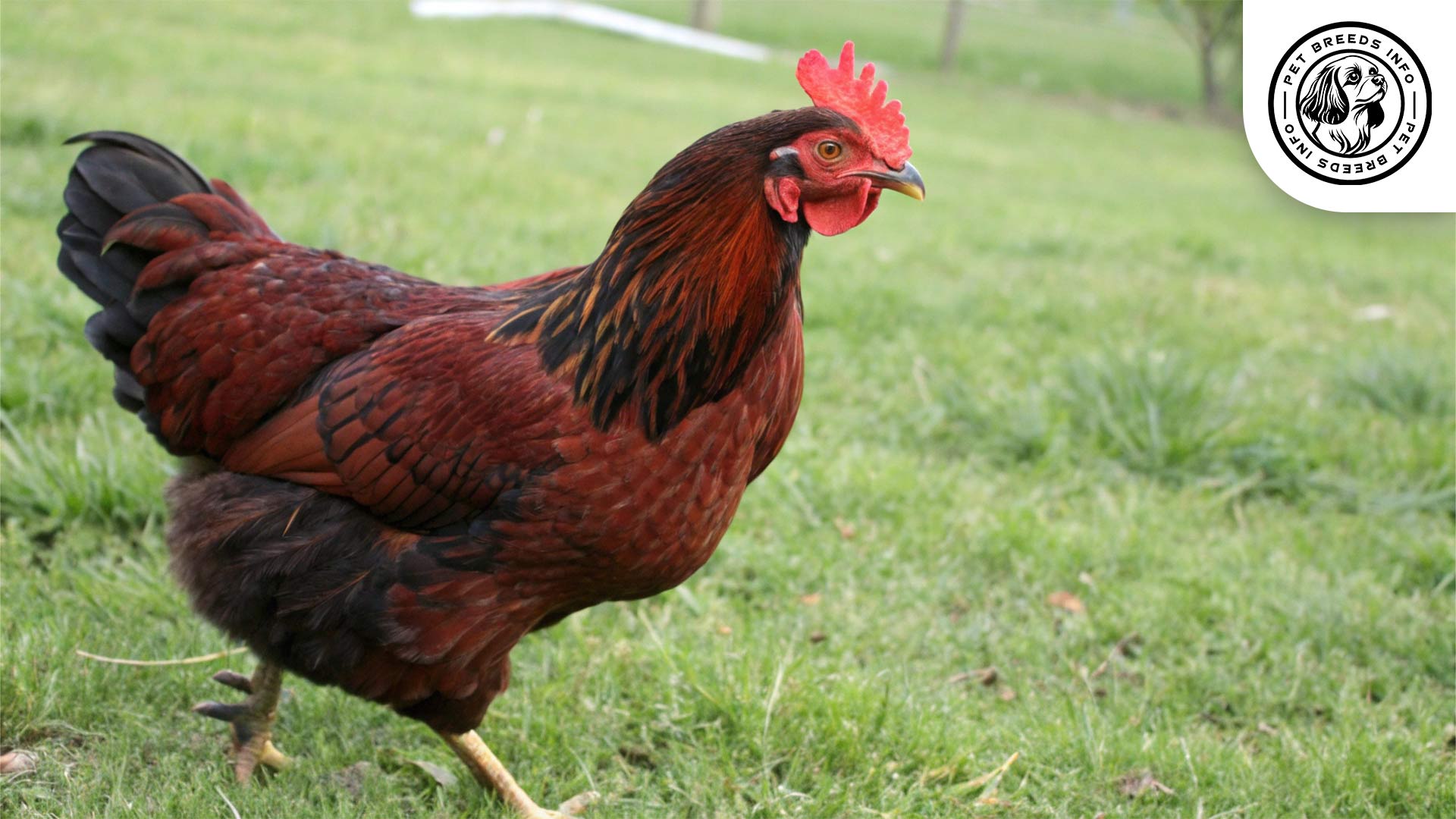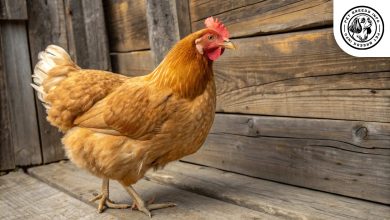Rhode Island Red Chicken Breed: Personality, Lifespan & Care
General Introduction of the Breed
The Rhode Island Red Chicken, known in English as Rhode Island Red, is a popular breed of poultry originating from the United States. This breed was first developed in the late 19th century in Rhode Island and Massachusetts. It was bred primarily for egg and meat production, making it one of the most versatile and widely kept chicken breeds worldwide.
Table of Contents
| Common Name | Rhode Island Red |
| Scientific Name | Gallus gallus domesticus |
| Origin | United States (Rhode Island & Massachusetts) |
| Size | Medium to large; roosters ~8.5 lbs, hens ~6.5 lbs |
| Lifespan | 5–8 years (can live longer with proper care) |
| Colors | Deep red to mahogany with glossy plumage |
| Talking Ability | None |
| Noise Level | Moderate; hens are fairly quiet, roosters louder |
| Social Behavior | Friendly, sociable, sometimes dominant roosters |
Physical Characteristics
Rhode Island Reds are medium to large-sized chickens. Roosters weigh approximately 8.5 pounds (3.9 kg), while hens weigh around 6.5 pounds (2.9 kg). They have a deep, broad body with a rectangular shape, allowing for excellent meat production.
Their feathers are a rich, deep red to mahogany color with a glossy sheen. Their eyes are typically a reddish-brown shade. They have a bright red comb, face, wattles, and earlobes, which contrast beautifully with their dark plumage. The comb is usually single or rose-shaped. The tail is well-developed but carried at a moderate angle.
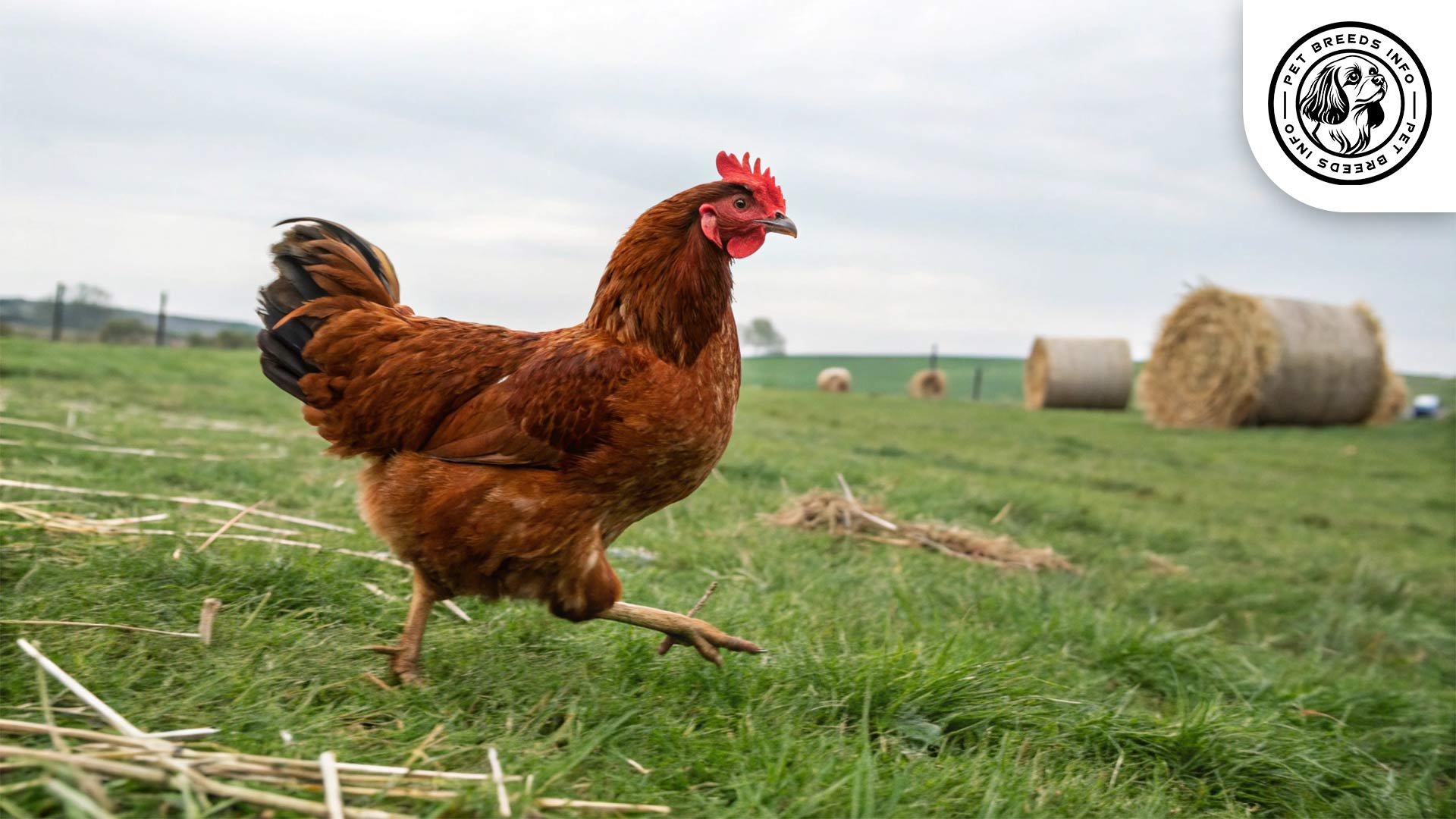
Personality and Temperament
Rhode Island Reds are known for their intelligence and resourcefulness. They are easy to train and can quickly learn to navigate coop environments, food sources, and interactions with humans.
They are active birds with a high energy level, often enjoying foraging and scratching for food throughout the day. They form strong attachments to their owners and can be quite friendly and sociable.
This breed is generally excellent with children and gets along well with other chickens and pets. However, roosters can sometimes be aggressive, especially if not handled frequently. Their playful and curious nature makes them enjoyable birds to keep.
Rhode Island Reds are resilient and can adapt to various environmental changes, making them suitable for different climates.
Care and Maintenance Requirements
They require space to roam and exercise, making them ideal for larger backyards or farms. However, they also adapt well to confined coops if given occasional free-range time.
Rhode Island Reds have low-maintenance grooming needs. They rarely require bathing, but their feathers should be inspected regularly for pests such as mites or lice. Their nails and beaks may occasionally need trimming, especially if they do not have access to natural surfaces for wearing them down.
These chickens are hardy and tolerate both heat and cold well, but extreme weather conditions should be shielded with appropriate coop insulation and ventilation.
Diet and Nutrition
They thrive on a well-balanced poultry feed rich in protein, vitamins, and minerals. Laying hens require higher calcium levels to sustain egg production. A diet of grains, vegetables, and occasional protein sources like mealworms or kitchen scraps is beneficial.
Foods to avoid include chocolate, caffeine, salty foods, and avocados, as these can be toxic to chickens.
Read More: Double-barred Finch
Proper portion control involves feeding them several small meals throughout the day and ensuring constant access to fresh water.
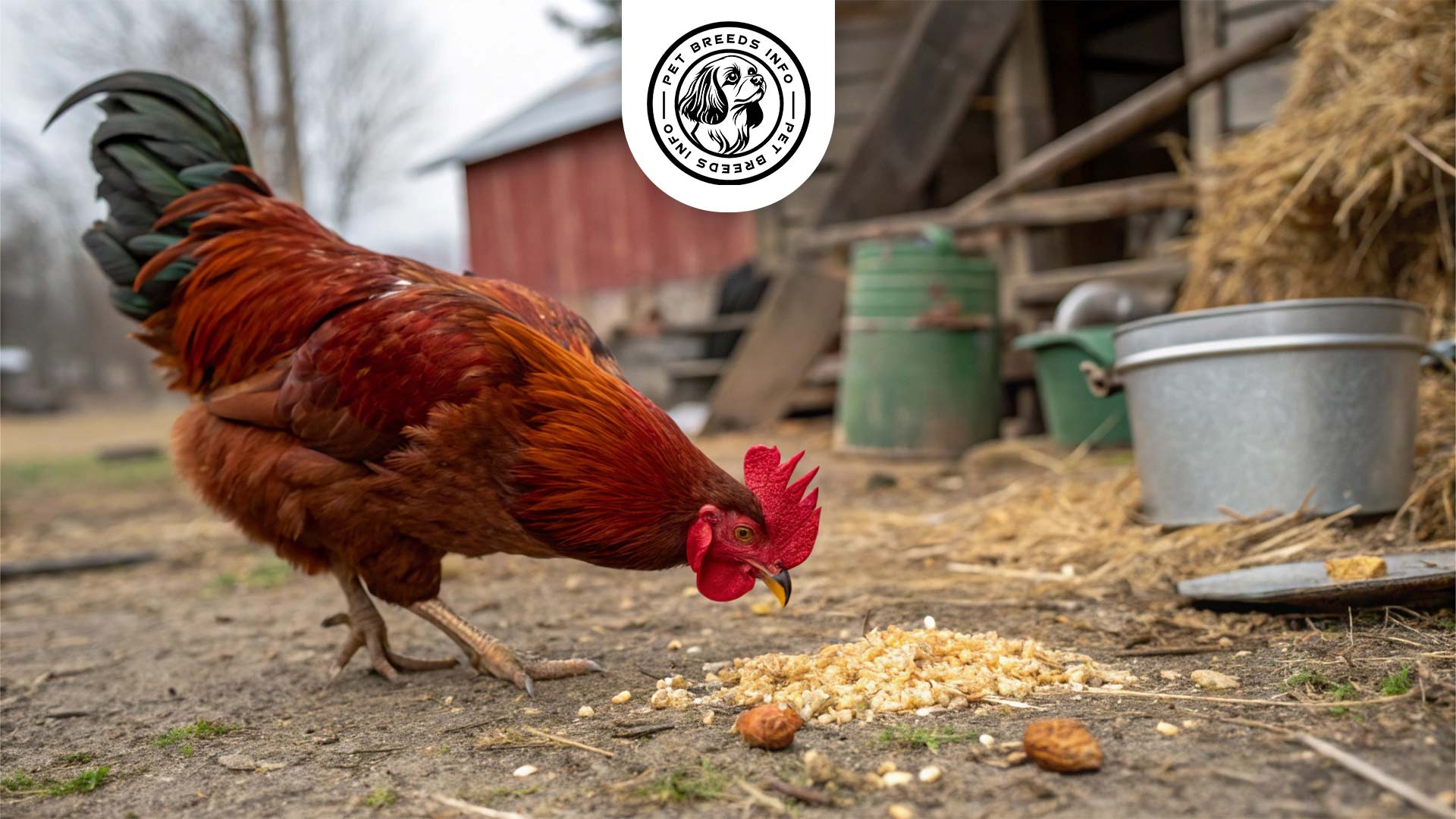
Health and Common Medical Issues
Rhode Island Reds are generally hardy, but they can be prone to common chicken ailments such as respiratory infections, parasites, and egg-laying disorders.
They typically have a lifespan of 5 to 8 years, though proper care can extend their life expectancy.
Regular vaccinations, deworming, and health check-ups are essential for keeping them in optimal condition.
Training and Behavior Management
Training Rhode Island Reds is relatively easy, especially when using food rewards and consistent handling. They can be trained to return to their coop at night and respond to familiar voices or sounds.
Early socialization with humans and other chickens helps in reducing aggression in roosters and ensures a well-behaved flock.
Read More: Dominique Chicken
Positive reinforcement methods such as treats and praise work well for encouraging good behavior.
Interaction with Other Animals and Humans
Rhode Island Reds are friendly with children and make great additions to family homesteads. They coexist well with other backyard animals and poultry but may show dominance over smaller chicken breeds.
Their independence allows them to thrive in free-range environments. However, they enjoy human interaction and often seek attention from their caregivers.
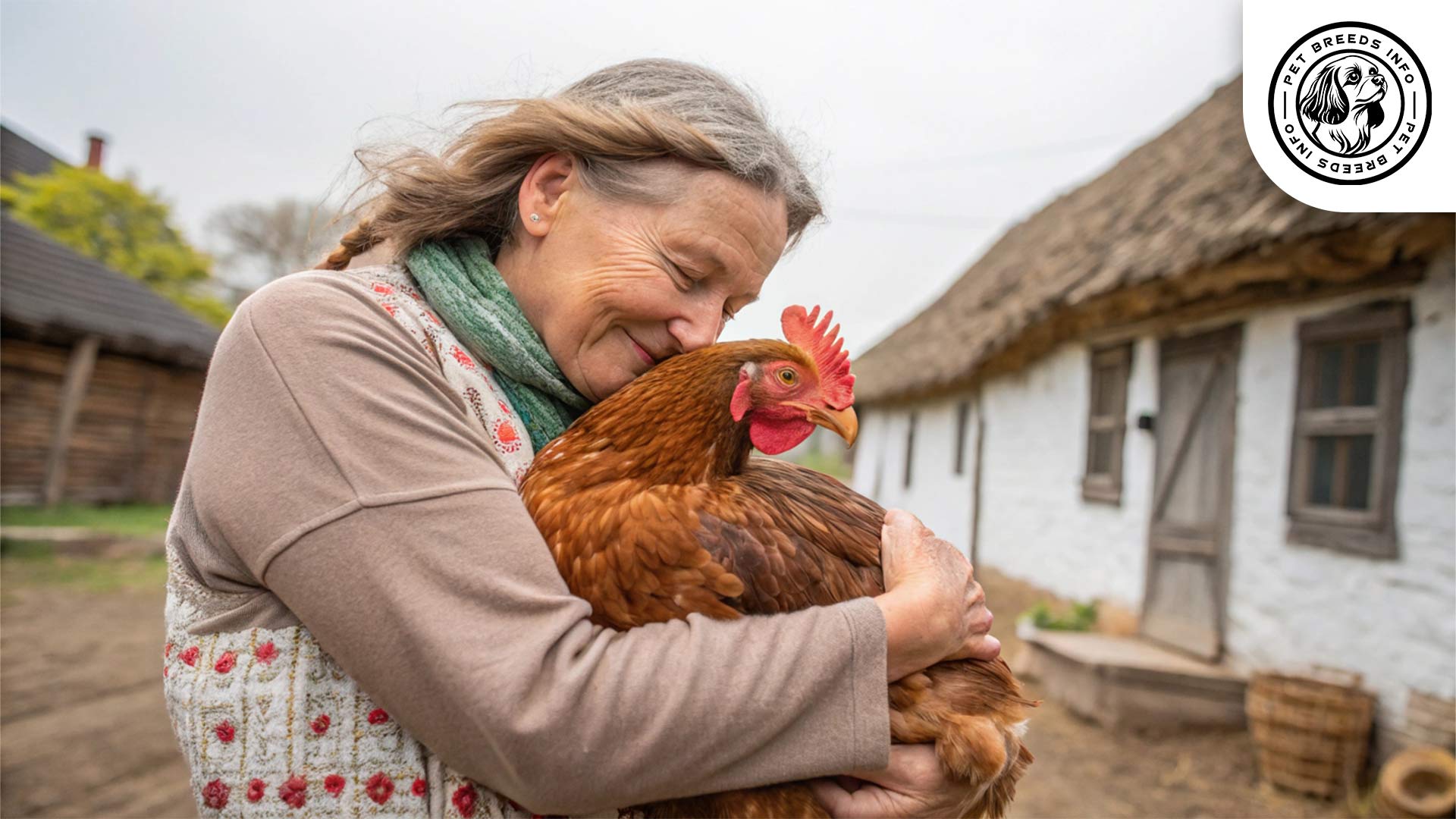
Price and Availability
The cost of a Rhode Island Red chick ranges from $3 to $5, with mature birds costing between $15 and $30, depending on quality and breeding.
It is advisable to purchase from reputable hatcheries or breeders who prioritize healthy and ethically raised birds.
Adoption and rescue centers occasionally have Rhode Island Reds available for rehoming, providing an alternative option for those looking to start their flock.
Conclusion and Final Thoughts
The Rhode Island Red Chicken is a fantastic choice for backyard poultry keepers who want a hardy, dual-purpose bird with a friendly, independent personality.
They thrive in various climates, require minimal maintenance, and provide both eggs and meat, making them a valuable addition to any homestead.
Potential owners should consider their space requirements, feeding needs, and proper socialization to ensure a healthy and productive flock.
Read More: Egyptian Goose
Overall, the Rhode Island Red is a reliable and rewarding breed for both novice and experienced poultry enthusiasts.
FAQ
Are Rhode Island Reds good for beginners?
Yes, they are hardy, low-maintenance, and friendly, making them ideal for novice poultry keepers.
Do Rhode Island Reds lay a lot of eggs?
Yes, they are prolific layers, producing around 250–300 brown eggs per year.
Can they be kept in confined spaces?
They adapt well to coops but prefer access to free-range areas for optimal health and happiness.
Are Rhode Island Red roosters aggressive?
Roosters can be territorial if not handled regularly, so early socialization is key.
